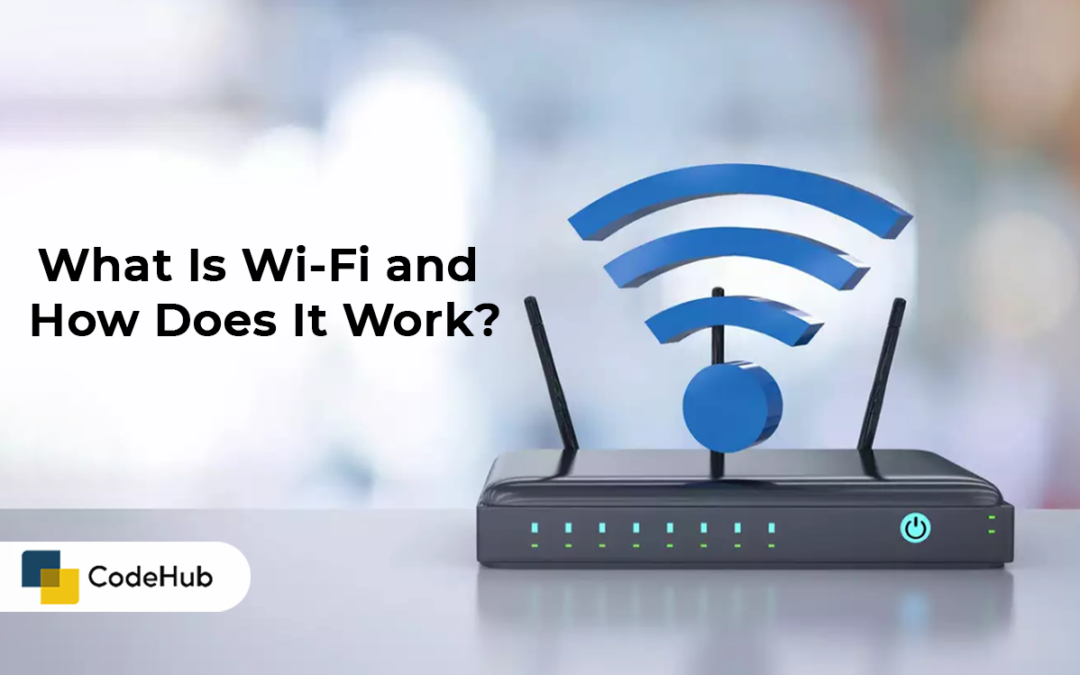Wi-Fi is a wireless networking technology that allows devices to communicate without cables or wires. It is one of the most common and convenient ways to access the internet and share data with other devices. But how does Wi-Fi actually work, and what does it stand for? Here are some basic facts and concepts that you need to know.
What Does Wi-Fi Stand For?
Wi-Fi is a trademark name of the Wi-Fi Alliance, an organization that certifies wireless products and standards. The name Wi-Fi is not an acronym, but a play on the term “Hi-Fi” or “High Fidelity”, which refers to high-quality audio reproduction. Wi-Fi is sometimes written as WiFi, wifi, or wi-fi, but the official spelling is Wi-Fi.
How Does Wi-Fi Work?
Wi-Fi works by using radio waves to transmit and receive data between devices. These radio waves are similar to those used by cell phones, radios, and TVs, but operate at different frequencies and ranges. Wi-Fi uses two frequency bands: 2.4 GHz and 5 GHz. The 2.4 GHz band is more widely used and compatible, but also more crowded and prone to interference. The 5 GHz band is less congested and faster, but also has a shorter range and may not work with some older devices.
To use Wi-Fi, you need two main components: a wireless router and a wireless adapter. A wireless router is a device that connects to your internet service provider (ISP) and creates a local wireless network. A wireless adapter is a device that enables your computer, smartphone, tablet, or other device to join the wireless network. The wireless router and the wireless adapter communicate with each other using a protocol called IEEE 802.11, which defines the rules and standards for wireless networking.
There are several versions of the IEEE 802.11 protocol, each with a different letter suffix, such as 802.11a, 802.11b, 802.11g, 802.11n, 802.11ac, and 802.11ax. These versions differ in terms of speed, range, and performance. The latest version, 802.11ax, also known as Wi-Fi 6, is the fastest and most efficient, offering up to 10 Gbps of data transfer rate and supporting more devices and applications.
What Are the Benefits and Drawbacks of Wi-Fi?
Wi-Fi has many advantages and disadvantages, depending on your needs and preferences. Some of the benefits of Wi-Fi are:
- It is wireless, which means you don’t have to deal with messy cables or wires.
- It is convenient, which means you can access the internet and other devices from anywhere within the network range.
- It is flexible, which means you can connect multiple devices and switch between them easily.
- It is affordable, which means you don’t have to pay extra fees or charges for using Wi-Fi, as long as you have an internet subscription and a wireless router.
Some of the drawbacks of Wi-Fi are:
- It is insecure, which means your data and devices may be vulnerable to hackers, viruses, or malware, unless you use encryption and passwords.
- It is unreliable, which means your connection may be slow, unstable, or interrupted, due to interference, congestion, or distance.
- It is limited, which means your network range and speed may depend on your router, adapter, and environment.
How to Set Up and Use Wi-Fi?
Setting up and using Wi-Fi is relatively easy and straightforward, as long as you have the necessary equipment and settings. Here are the basic steps to follow:
- Connect your wireless router to your modem or ISP using an ethernet cable.
- Plug in your wireless router to a power outlet and turn it on.
- Configure your wireless router using a web browser or an app, following the instructions provided by the manufacturer or your ISP.
- Choose a network name (SSID) and a password (key) for your wireless network, and enable encryption (WPA2 or WPA3) for security.
- Connect your wireless adapter to your device, either internally or externally, and turn it on.
- Scan for available wireless networks on your device and select your network name (SSID).
- Enter your password (key) to join the network and access the internet and other devices.
You can also use Wi-Fi to create a hotspot, which is a temporary wireless network that you can share with other devices. To create a hotspot, you need a device that has a cellular data connection and a wireless adapter, such as a smartphone or a laptop. You can then enable the hotspot feature on your device and choose a network name (SSID) and a password (key) for your hotspot. Other devices can then connect to your hotspot using the same network name (SSID) and password (key), and use your cellular data to access the internet.
Conclusion
Wi-Fi is a wireless networking technology that lets you connect to the internet and other devices without cables or wires. It works by using radio waves to transmit and receive data between a wireless router and a wireless adapter. It has many benefits and drawbacks, depending on your needs and preferences. It is easy to set up and use, as long as you have the necessary equipment and settings. You can also use Wi-Fi to create a hotspot, which is a temporary wireless network that you can share with other devices. Wi-Fi is a popular and convenient way to access the internet and share data with other devices.

